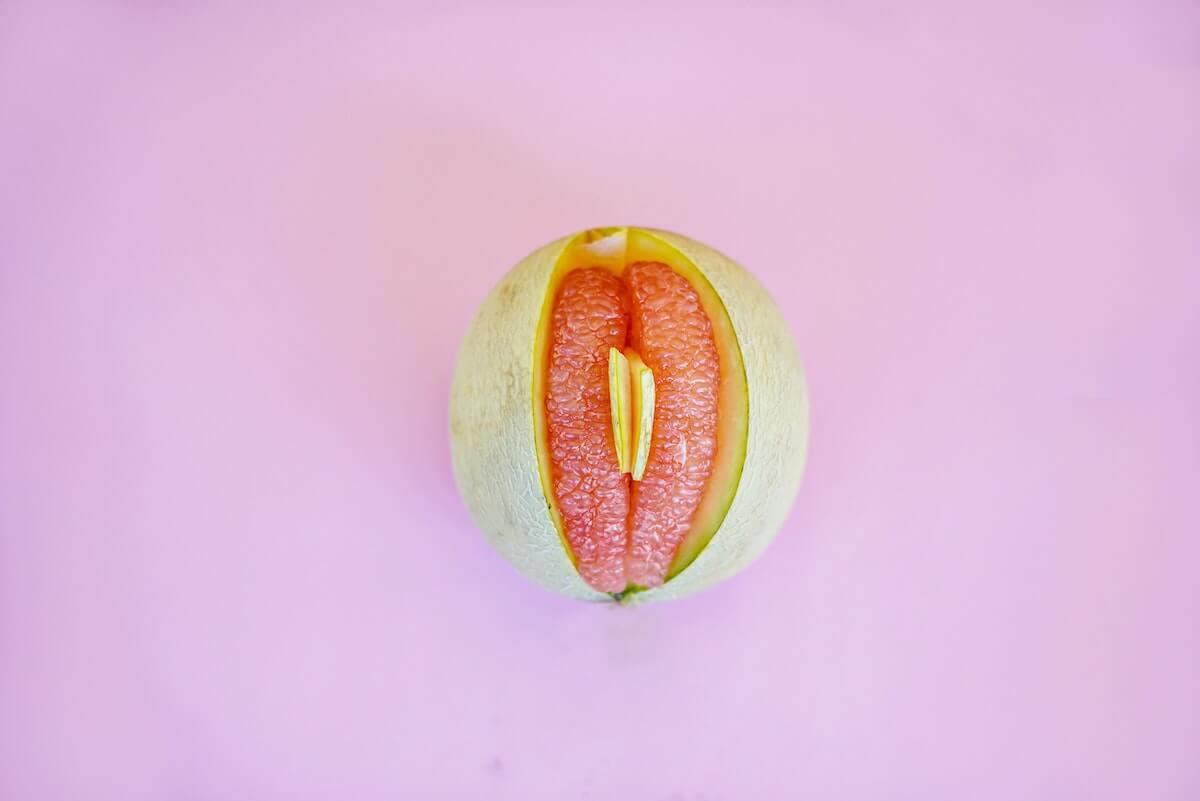Vaginal pH: what it is and how to keep it groovy

If your vagina has ever experienced anything less than blissful balance, chances are you’ve heard a little something about vaginal pH. If you’ve ever had a doctor tell you that the strange-smelling discharge and itchiness you’re experiencing is bacterial vaginosis (BV), or if you’ve ever had to buy those awful yeast infection treatments at the pharmacy to get rid of the sensation that your vagina is burning in hell—along with, you guessed it, more discharge—these are signs that your vaginal pH is out of whack. The good news: even if your issues are chronic, and even if they’ve eluded doctors for years, there is hope for restoring balance to your precious gal pal, and many of the things that can make your vag a healthier and happier place are simple DIY measures.

What exactly is vaginal pH?
When we measure how acidic or alkaline something is, we use a unit of measurement known as pH. The pH scale runs from 0 to 14, with anything under 7 considered acidic, and anything over 7 alkalaine. As it happens, the pH level of your vagina has a big say in your vaginal health.
A vaginal pH of 3.8 to 4.5 (moderately acidic) is considered healthy and normal. It should be noted though, that for girls who have yet to menstruate and post-menopausal women, a pH of slightly over 4.5 is considered perfectly normal.
Why does vaginal pH matter?
Ok, here’s the skinny. An acidic vaginal environment protects you from wayward bacteria and yeast by creating a barrier that prevents them from multiplying too fast and causing problems. On the other hand, a vaginal climate that’s too alkaline provides the perfect conditions for bad bacteria and yeast to get out of hand, putting you at risk for infections like bacterial vaginosis (BV), trichomoniasis (or trich), yeast infections, and even UTIs (it’s all connected, baby).
On the other end of the spectrum, a vagina that’s overly acidic may reduce fertility, as sperm love to swim in alkaline waters. Fun fact: during sex, vaginal pH rises temporarily to create a more welcoming, alkaline environment which will protect sperm. So—if you’re trying to get pregnant, know that your body is trying to help you achieve just that.
What can throw your vaginal pH off balance?
While a huge range of factors can alter your vaginal pH, some of the most common ones include:
Antibiotics. In case you don’t know, these overly prescribed meds kill off good bacteria right along with bad bacteria. This can easily result in a host of digestive issues and an overly alkaline vaginal pH (good bacteria are what keep you in check).
Douching. Although this practice has been strongly discouraged for decades now, about 20% of women still douche regularly with OTC products (not sure why they haven’t been banned) or DIY mixtures of water, vinegar, baking soda, and iodine. Douching not only increases your vaginal pH—it encourages the proliferation of harmful bacterial.
Unprotected sex. Whether you’re in a committed relationship or not, have been tested for STIs or not, and are trying to get pregnant or not, some women are particularly sensitive to semen—if a guy cums inside you without a condom, you run a higher risk of developing an overly alkaline environment.
Menstruation. Like semen, menstrual blood is a bit on the alkaline side and tends to raise vaginal pH. That’s all hunky dory, but when you wear a tampon or a pad which just kinda holds this alkaline mixture in place, it can raise your pH too much. Diva cups are a solution for some.
High or chronic stress. Stress can cause any health problem you can think of, including a high vaginal pH. Research has shown a palpable connection between spikes in cortisol (AKA the stress hormone) and the likelihood of developing BV.

Signs of a vaginal pH that’s off kilter
As we’ve already established, a high pH can lead to numerous types of vaginal infections, but the actual discernible symptoms you might experience (if you experience any) include the following:
A change in the color and texture of your discharge. It may be white, gray, or yellow with a “cottage cheese-like” texture. Healthy discharge is most often clear or white.
A change in the scent of your discharge. I’m talking strong, foul, or “fishy,” rather than your usual scent.
Discomfort and itching in the vagina and vulva area. This may present as itching around the vaginal opening, burning while peeing, or discomfort during sex among other fun feelings.
How to restore (and maintain) a healthy vaginal pH—naturally
If you think your vaginal pH is off balance, there are things you can do to get it back on track naturally. Of course—if your symptoms are severe and refuse to go away with natural remedies, always be sure to get a doctor’s opinion.
Probiotics
In a healthy vagina, ’good’ bacteria, AKA lactobacilli, grow in abundance. They fight off infection and keep your pH balanced. You should always take probiotics if you've taken antibiotics, but even if you haven't, you might try them out to see if they help. Lactobacilli can be taken in several ways: orally, as a probiotic supplement; intravaginally; and in fermented probiotic foods like yogurt, kimchi, or sauerkraut. Although oral supplements and foods are a good start, intravaginal probiotic supplements take a more targeted approach. Personally, I can vouch for FeminaFlora.

Boric acid
Boric acid is accessible, affordable, and has been used to treat BV for a good century now. Before resorting to antibiotics (which can cause a whole other type of imbalance, as already established), you may want to consider using boric acid suppositories (in spite of the name, they go in your vagina, not your bum). You can buy them at some pharmacies or online. Personally, I can vouch for Nutrablast.
Garlic
Garlic is full of a bacteria-fighting compound known as allicin. Research shows that garlic tablets may be just as effective as oral antibiotics at treating the symptoms of a yeast infection or BV, with fewer side effects. You can buy garlic tablets at a pharmacy or online. Or, you might experiment with using actual raw garlic instead. Note: there is ample evidence that inserting a clove of garlic into your vagina helps fight both bacteria and yeast (and tons of anecdotal evidence to boot), but unsurprisingly, medical professionals discourage it. I have my theories about this. In any case, if you go there, do so at your own risk, but know that I have personally done this several times with success.
Less stress
We can’t avoid stress altogether unless we want to hide in a dark cave, but even then I’m certain new stresses would arise. That said, there are ways to stop your stress hormones from adversely affecting your health—including your vaginal pH. Consider exercising to increase your brain’s production of endorphins, or “feel-good” neurotransmitters. Yoga and meditation can be very helpful for reducing stress as well, as can deep breathing exercises. And, of course, if you’re in a toxic relationship or you have a job you hate, you already know what you need to do.

No smoking
Research shows that smokers may be more likely to develop BV. Nonsmokers have actually been found to have a larger proportion of lactobacillus in their vaginas than smokers! If you wanna quit smoking but aren't sure how, there are several alternative therapies that may help. Many have had success quitting with the help of acupuncture. You can also talk to your doctor about setting up a plan that works for you.
No soap or scented products
Even though the vagina is self-cleaning, there is no shortage of fragrant cleaning products on the market. Besides avoiding douches like the plague, it’s also best to avoid vaginal washes and scented tampons or pads. To clean your vulva and vagina, simply rinse the area gently with warm water. If you still want to use soap, choose all-natural, fragrance-free options.

The right panties (or none at all)
To keep your poompoom pH balanced, wear panties made from natural, breathable, absorbent fabrics like cotton, avoid thongs that get trapped in your cracks (just tellin’ it like it is), use a hypoallergenic detergent to wash ‘em, go commando at night to prevent excess moisture, and change your underwear throughout the day if they get too moist or you feel irritated. Got all that? Hot tip: wear skirts with no panties! Just be sure not to wear the kind vulnerable to gusts of wind.
A healthy diet
Eating a balanced, nutritious diet and staying well-hydrated is key to health in general and vaginal health in particular. If you experience chronic yeast infections, chances are high that you have a candida overgrowth (a startlingly common condition doctors are slowly starting to acknowledge exists), and could benefit from following the candida cleanse diet. I know I did. If you’re serious about taking this on, read The Candida Cure, which outlines a very helpful 90-day program for getting back in balance.
Bottom line: maintaining a healthy vaginal pH is a delicate balance, but once you find the route that works for you, it just gets easier and more eye opening. The big bonus: once you get your vaginal pH back in check, chances are high that you’ll see improvements in your overall health as well. Because it’s all connected. <3
